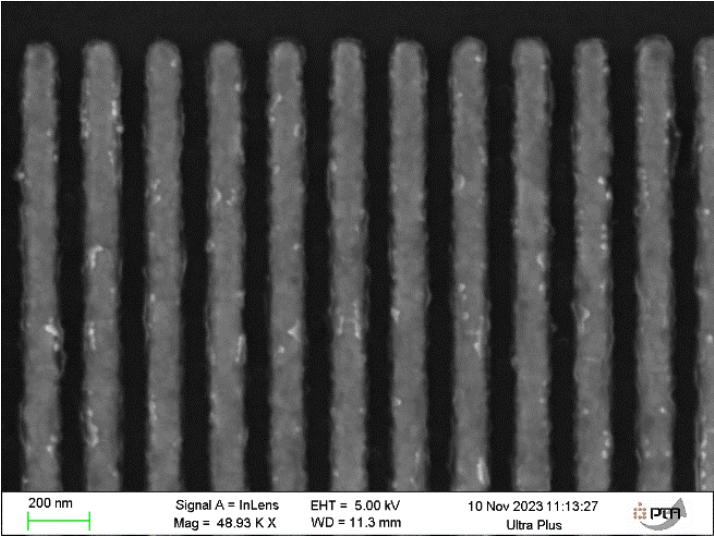- Share
- Share on Facebook
- Share on X
- Share on LinkedIn
As part of a CNES-funded contract with IM2NP and CINAM, LTM is involved in the development of a technology chain for rectenna-based solar cells. The basic idea is to use a plasmonic array of metallic nano-antennas to capture solar electromagnetic radiation in the infrared range, and couple this array to a rectifying MIM diode to transform the very high-frequency alternating current flowing through the antenna into a direct current. This type of device offers several major advantages, such as high theoretical photo-conversion efficiency and adaptable operation from visible to infrared.

From a technological point of view, the key points lie in optimizing the deposition of perfectly controlled ultra-fine dielectrics and defining a network of gold lines with widths ranging from 100 to 250 nm over a large surface area. An important point for satellite use of this type of device is its durability in the vacuum of space. CNES wanted to associate our samples with a material ageing study.

As a result, 4 different samples were integrated into a module that left for the International Space Station in November 2024. These samples have been exposed to the vacuum of space since December 2024, and will be analyzed on their return to earth.
- Share
- Share on Facebook
- Share on X
- Share on LinkedIn